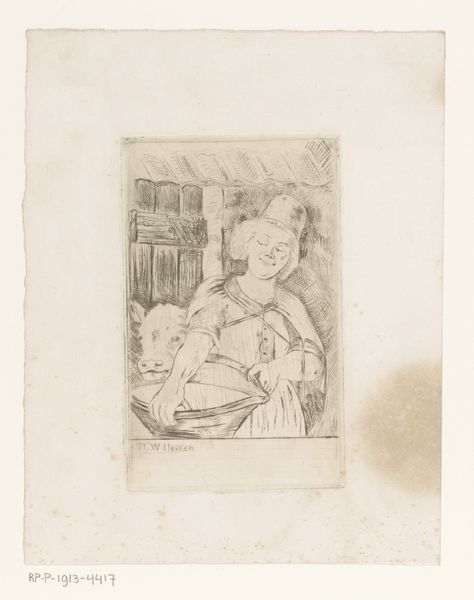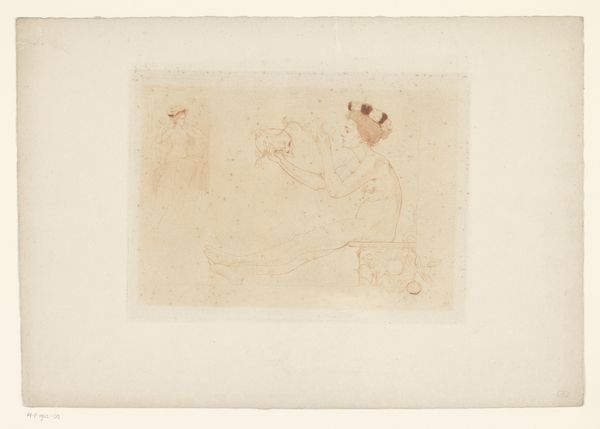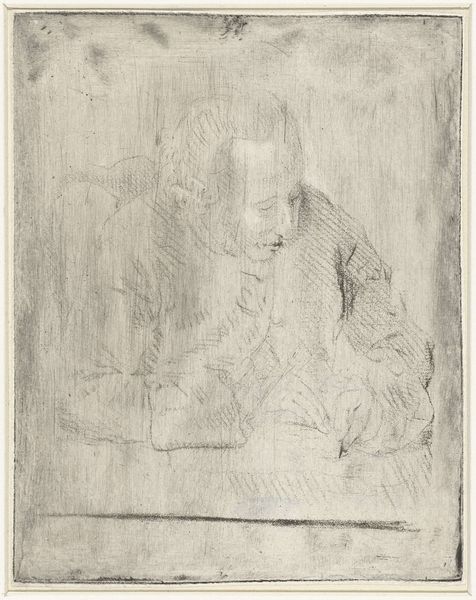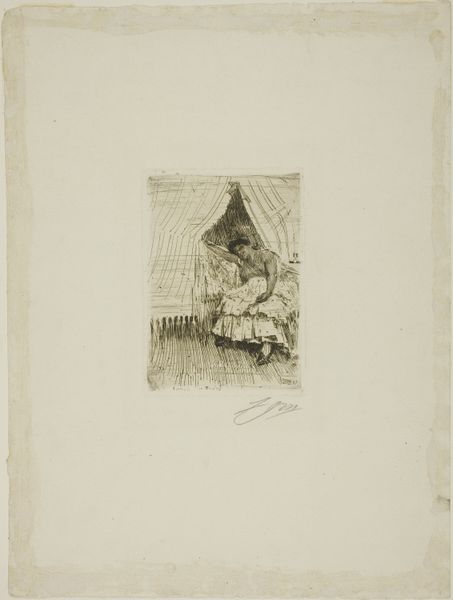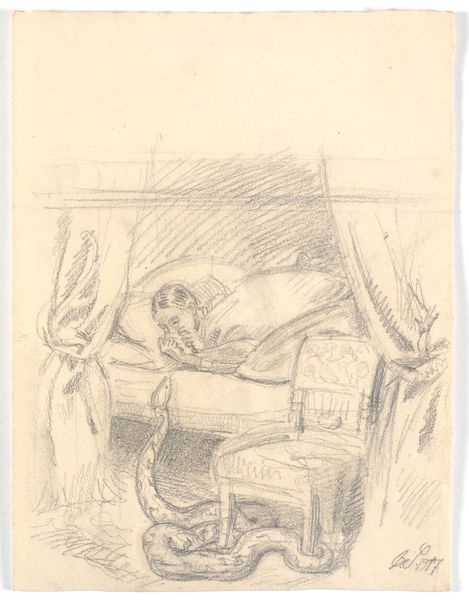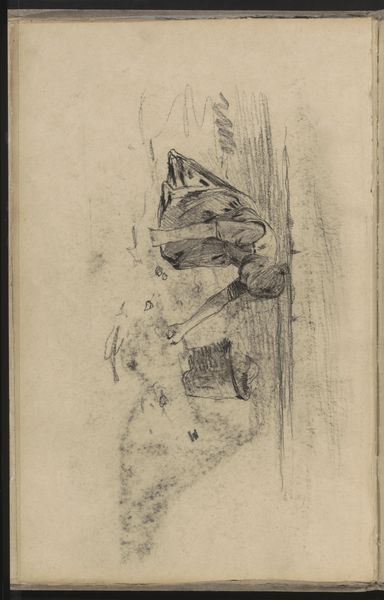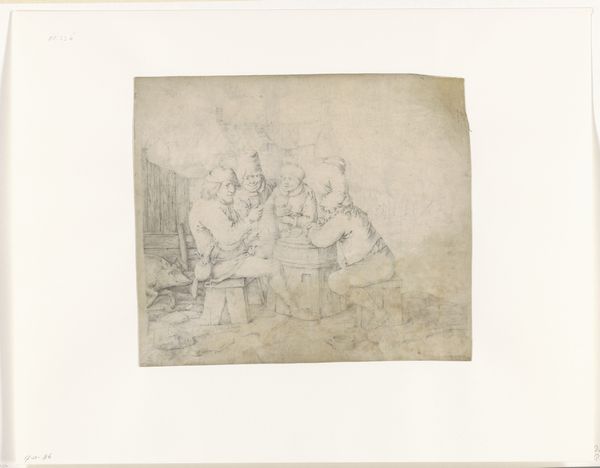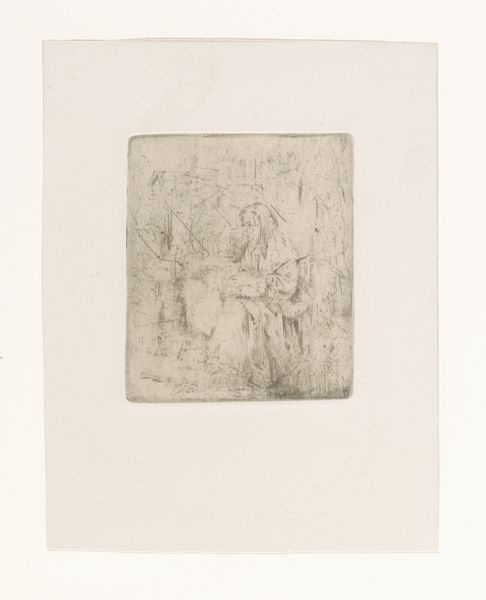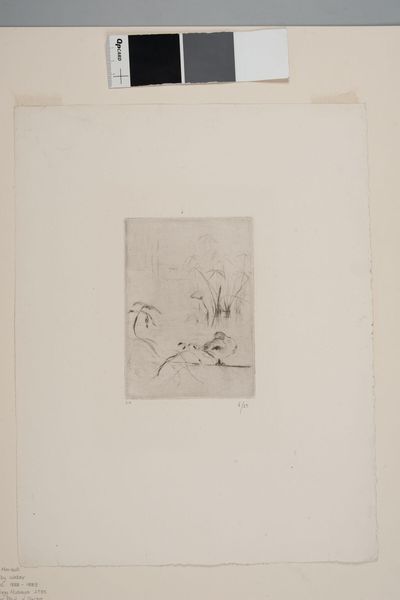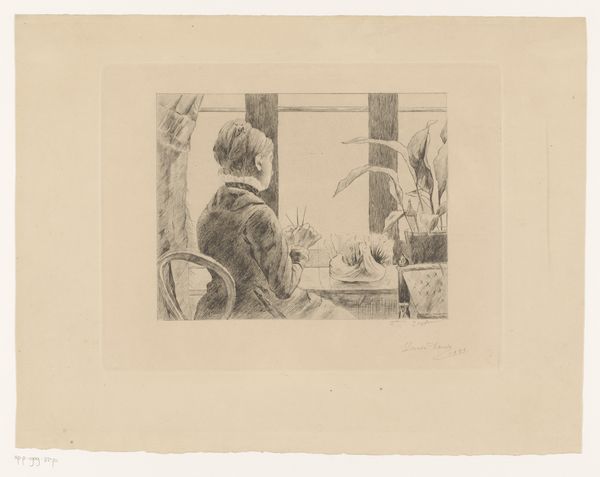
print, etching, paper
#
portrait
# print
#
impressionism
#
etching
#
etching
#
figuration
#
paper
#
academic-art
Dimensions: 278 × 216 mm (image/plate); 404 × 254 mm (sheet)
Copyright: Public Domain
Curator: I find the subtle nature of Mary Cassatt's print, "On the Balcony," created around 1889, truly captivating. As an etching on paper, its delicate lines draw us into an intimate scene. Editor: Intimate, yes, but also a bit haunting, isn’t it? The almost ghostly figures against the stark white backdrop give off a sense of isolation. What stories are buried beneath those faint lines? Curator: Considering Cassatt's position within Impressionism and her focus on domestic scenes, it’s interesting to analyze how she portrays the limited sphere of women’s lives during that era. This balcony isn’t just a pretty view; it's a threshold between private and public, freedom and confinement. Editor: And the veil of implied meaning extends from the balcony motif to the figures themselves: Observe the mother-and-child dyad, such a potent and recognizable image in art history. How might Cassatt manipulate the resonance of that symbolism for a contemporary audience? What memories of childhood, of comfort, of limitation does it conjure for you? Curator: Absolutely. We can’t ignore the sociopolitical realities in which Cassatt worked. As a woman artist during the late 19th century, she faced immense structural barriers in the art world. How does her perspective as a woman inflect the dynamics portrayed here? I suggest that while depicting familiar domestic roles, she questions their underlying power structures. Editor: Look closely at the very act of the artist representing this familiar tableau: Mother and child. Cassatt uses, but also subverts, tradition, imbuing it with complexity. We are reminded how symbolic patterns get embedded, shape us psychologically. Her work preserves a constellation of deeply emotional and intellectual signifiers, from the pose, the style, to the medium. Curator: That nuanced negotiation—both adhering to and subverting societal norms—is precisely where Cassatt’s genius resides, challenging the male gaze that had historically dominated depictions of women and the domestic space. Editor: So in a way, "On the Balcony" is a study on boundaries, be they literal or psychological. The piece really resonates today, provoking dialogue on societal power dynamics and collective symbols in art. Curator: Indeed. It’s a subtle work that speaks volumes about gender, space, and the hidden language of domestic life during a transformative era. Editor: Absolutely. It reveals an entire worldview and ethos, packed into one delicate scene on paper.
Comments
No comments
Be the first to comment and join the conversation on the ultimate creative platform.
